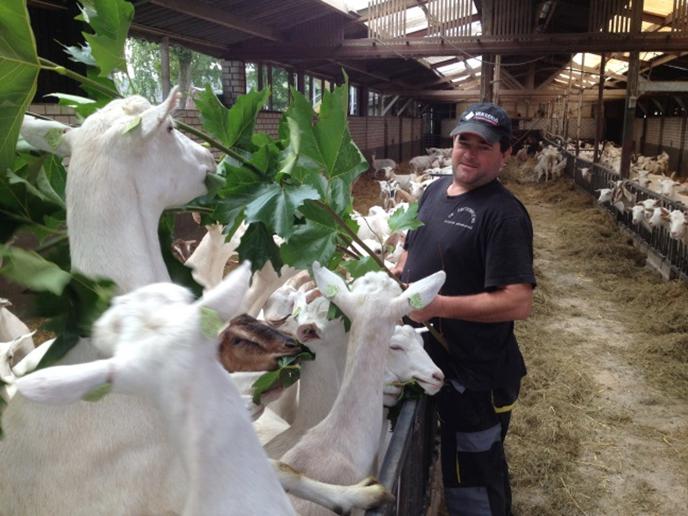
L'arbre fourrager dans des systèmes d'élevage bovin et caprin du Pays Bas
Description du système
Quelques élevage laitiers caprins et bovins de la région de Duinboeren aux Pays Bas ont participé au réseaux d'agriculteurs pour l'Arbre Fourrager et pour la multifonctionnalité des terres ( Fodder Trees and Multifunctional Land Use) de 2012 à 2014. Durant ce projet quatre sites pilotes ont planté des arbres fourragers accessibles pour le pâturage de troupeaux laitiers (chèvres et bovins). Le saule (Salix ssp.) fut une des espèces testées.
Première rencontre entre acteurs
Quatre agriculteurs utilisant l'arbre fourrager ont été interviewés le 11 septembre 2014. L'aspect le plus positif de ces systèmes est l'amélioration de la santé et du bien-être animal. Le principal défaut reste le contrôle des mauvaises herbes dans la mise en place des pieds de saule. Les points restant à développer sont la protection des arbres pâturés, la sélection d'espèces fourragère, et l'organisation du système.
Pour plus d'information sur les activités de ce groupe, contacter Boki Luske (B.Luske@louisbolk.nl) de l'Institut Louis Bolk (Pays Bas).
Télécharger le premier rapport du groupe de travail
Télécharger le rapport initial du protocole R&D
Télécharger la description du système
A system description report providing an update on the research with ruminants and fodder trees was produced in November 2015.
Lessons learnt
In August 2017, Boki Luske and colleagues at the Louis Bolk Institute summarised the lessons learnt from their research on using tree fodder with dairy cattle in the Netherlands. The research focused on measuring several functional aspects of willow (Salix viminalis) and alder (Alnus glutinosa) trees in a case study. The intake of leaves and twigs by dairy cows was estimated by a browsing experiment on an organic dairy farm. In this particular trial the cows preferred willow leaves to alder leaves. Willow cultivars which have a wide spreading habit were able to provide a “fodder hedgerow” with many growing points within the reach of the cows. Wide growing willow trees enable three dimensional grazing.
Additionally, the nutritional value of the leaves was determined from leaf samples and from a literature study. In general, the willow and alder leaves were found to have higher protein, macro- and micro-element levels than grass. The intake rate of willow was only 0.6 and 0.4% of the required dry matter intake for dry and lactating cows respectively. However the intake of, for instance, sodium (Na), zinc (Zn), manganese (Mn) and iron (Fe) was 2-9% of the daily requirements.
The willow and alder trees also play a functional role in relation to soil fertility and initial measurements were taken of soil organic matter, nitrogen and phosphorus below the trees compared to the grass. Significantly higher earthworm numbers and earthworm biomass were found in the soil under the alder trees than under the willow trees.